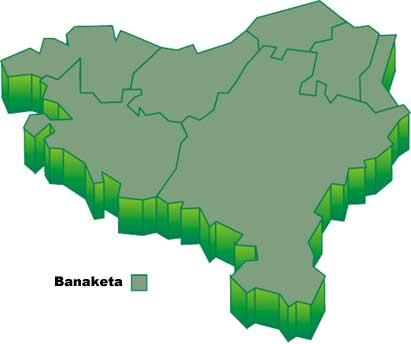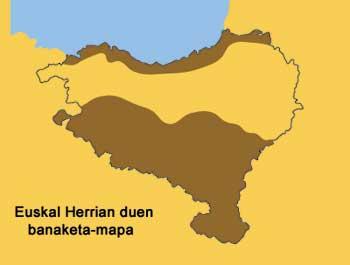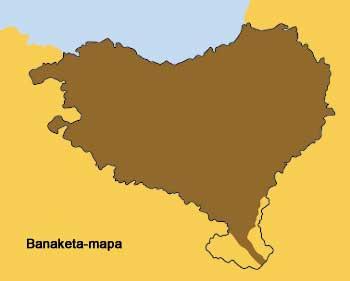Txantxangorri, the guardian of the territory
1994/07/01 Elosegi Irurtia, Migel M. Iturria: Elhuyar aldizkaria
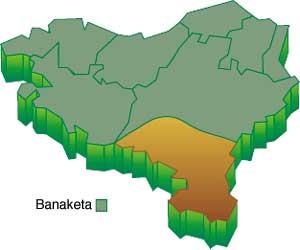
Is there a more popular bird in Euskal Herria than txantxangorri?
In oral and written literature there has often appeared some aspect of this precious bird, and so says a well-known legend: Jesus Christ approached a robin on the cross and removed the thorns on his head. But at that time a drop of blood fell on the chest and remained as red forever as the sun of the most beautiful sunrises.
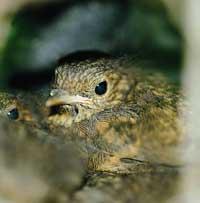
In other legends, txantxangorri appears as an adorable animal that is not afraid of the human being. No wonder! Thanks to its colour and caradura, it has become one of the most famous birds. But it is that the bird, apparently so weak and sweet, has an aggressive and bloody character when it comes to taking care of the territory, and deals for a long time with this task.
The robin (Erithacus rubecula) is a passerine of 14 cm in length and weight between 16 and 22 g. Adults of both sexes are dressed in a striking front and reddish chest, brown-green back and white belly. Fine and long legs, thin beak and large black eyes form the image of the cheerful and sweet animal.
People who know little about ornithology also know our bird perfectly. And it is normal, considering its beauty and variety. In addition, from the seashore, it can appear to the limit of the altitudes forest, and inhabits all forests, gardens, orchard fences and, in general, groves with abundant scrub.
In these places it feeds on small insects, spiders, worms, rodents and other invertebrates that it seeks in the soil and/or scrub. However, when in winter it is more difficult to find insects, you must supplement your diet with fruits and seeds, approaching the parks, gardens and areas of the villages.
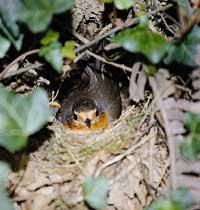
As mentioned at the beginning, the robin is very demanding in preserving the limits of his territory and struggles to send all people to come to him. In addition, both males and females maintain this behavior throughout the year, including winter, when two individuals reproduce in the same territory and only gather when pulling chickens forward. To reclaim the property of the territory, climbed to the scrub that usually explodes, to trees or places as striking as ours, sings an elegant and beautiful song full of txorrotxos and firurika.
The geographical distribution of the species is widespread in Europe and is only missing in northern Scandinavia. Before winter approaches, in late August, txantxangorriak in northern Europe begin to migrate to spend the winter in the Mediterranean area. In central Europe, while some migrate to the south and some winter there, the populations of the Iberian Peninsula do not show a tendency to migrate in winter.
In the humid part of the Basque Country, in the forests and bushes it is a very common nest, but in the south direction only appears in the forests of the rivers and mountains. In the Ribera de Navarra, finally, we do not find it, nor in the choperas that surround the pine forests or the river, although many are concentrated in wintering.
The nest, located near the ground, is in a well concealed branch or hole by the leaves, and for its construction uses leaves, herbs, mosses and hairs, so that the chickens grow gently. In it, the female will place between 4 and 6 eggs sprinkled with 20 mm red. Between 12 and 15 days the hatching takes place and the couple will have to work hard in the search for food so that the little ones are willing to leave the nest between 13 and 14 days later.
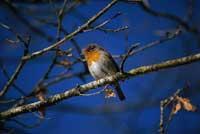
It is estimated that of the 10 eggs that are placed there will be a single specimen that reaches the reproductive time and that has a mortality rate of 50% annually and a half-life of 1.5 years, so the robin has to make a great effort in reproduction, taking the same year 2 and sometimes 3 chickens.
As already mentioned, txantxangorrikumes do not have flashy red colorations and have a cryptic clothing until they change their plumage. This, in addition to protecting themselves from predators in those first hard days of life, will allow them not to expel the adult txantxangorri from their territory. But when at the end of summer they change plumage, each one will try to conquer their territory, creating imminent discussions and confrontations with all the people of the area.
However, these vicissitudes that occur in defense of the territory can be seen in many other species, and the time and energy they spend on these tasks, undoubtedly, will be compensated with the food they ensure.
Technical information Robin Species: Erithacus rubeculaFamily: muszikapOrder: passionshapes Class: birds |

Gai honi buruzko eduki gehiago
Elhuyarrek garatutako teknologia



